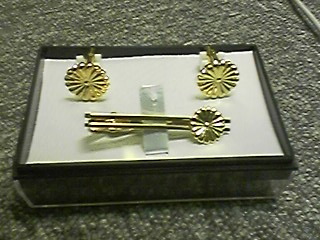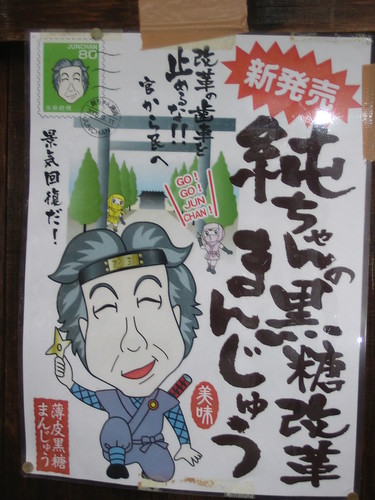As if the Niagara Incident wasn’t bad enough (there’s currently a huge controversy in the Japanese media over whether it should be labelled the ナイアガラの滝の事件 or ナイアガラの滝の事変), and now this report!
The “King” never came to Japan, but Japan’s prime minister is making a pilgrimage to Graceland.
Elvis fan Billy Morokawa says Japanese Prime Minister Junichiro Koizumi will likely feel the power of Presley’s enduring energy when he tours the rock-and-roll legend’s home in Memphis, Tennessee, Friday with President Bush.
Did you see that? “Pilgrimage” There’s no way this visit is going to pass the church/state test, and visiting it alongside President Bush the “I was only going in my capacity as a private citizen” defense is never going to fly, particularly when considering his personal history in this cult.
Koizumi, 64, is an Elvis devotee who not only shares a January 8 birthday with his idol, but picked out his songs for a 2001 charity album, “Junichiro Koizumi Presents My Favorite Elvis Songs.” The prime minister appears on the album’s cover standing next to Elvis outside Graceland in a composite picture.
Back in 1987 when Koizumi was a mere lawmaker, he and his brother Masaya, now a senior adviser to the Tokyo fan club, helped raise funds to erect a status of Elvis in the Japanese capital to commemorate the 10th anniversary of his death.
Three years ago the prime minister, an eclectic music lover whose favorites also include German composer Richard Wagner, sang his favorite Elvis hit — “I Want You, I Need You, I Love You” — with actor Tom Cruise, then in Tokyo to promote his movie “The Last Samurai.”
Let’s just hope that this time the Supreme Court actually has the guts to face the real constitutional question and not skirt the issue on technicalities.




 ‘‘From the viewpoint of the spirits of the war dead, they hailed ‘Banzai’ for the emperor — none of them said ‘prime minister Banzai!’ A visit by the emperor would be the best,” Aso said in a speech in Nagoya.
‘‘From the viewpoint of the spirits of the war dead, they hailed ‘Banzai’ for the emperor — none of them said ‘prime minister Banzai!’ A visit by the emperor would be the best,” Aso said in a speech in Nagoya.